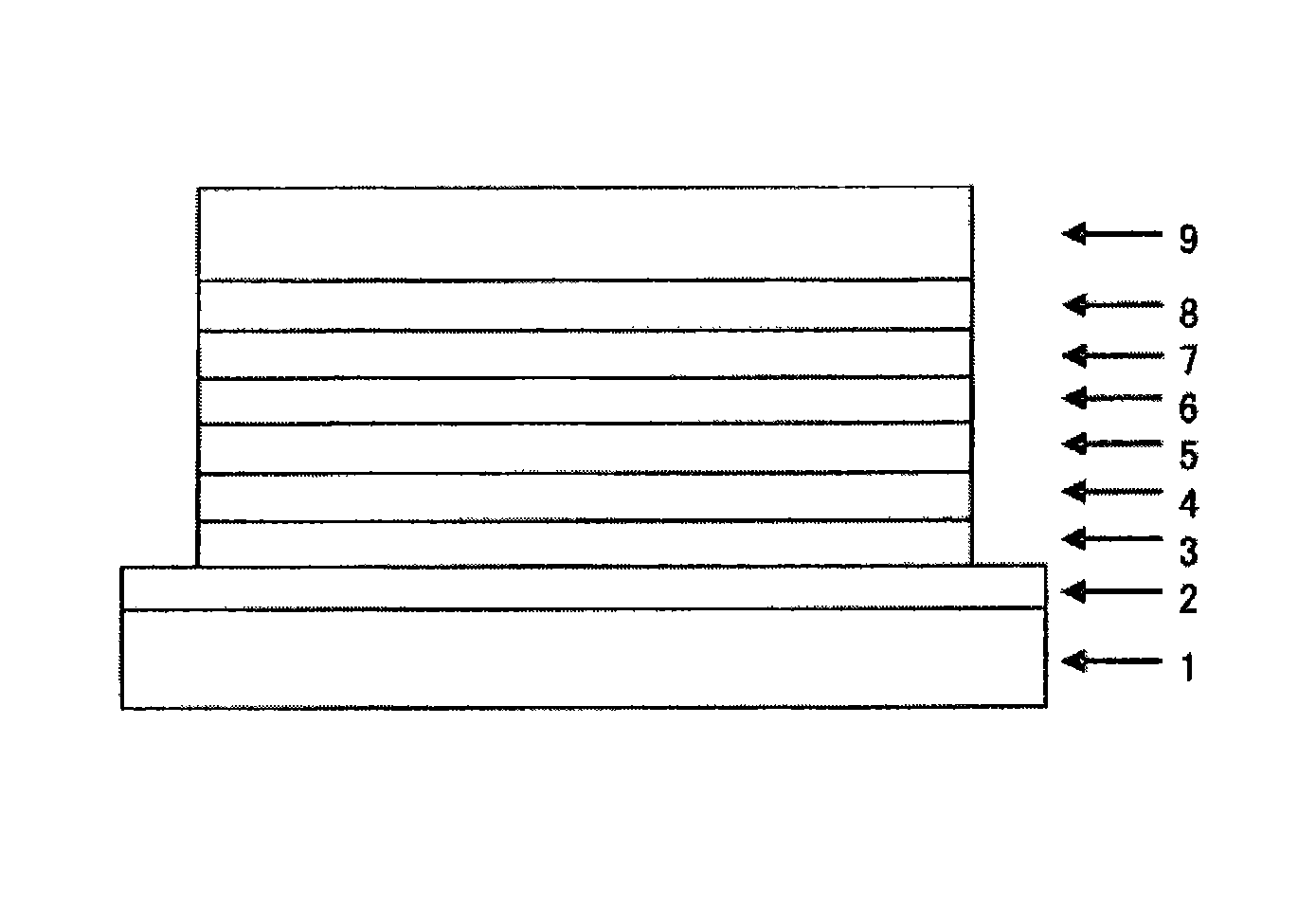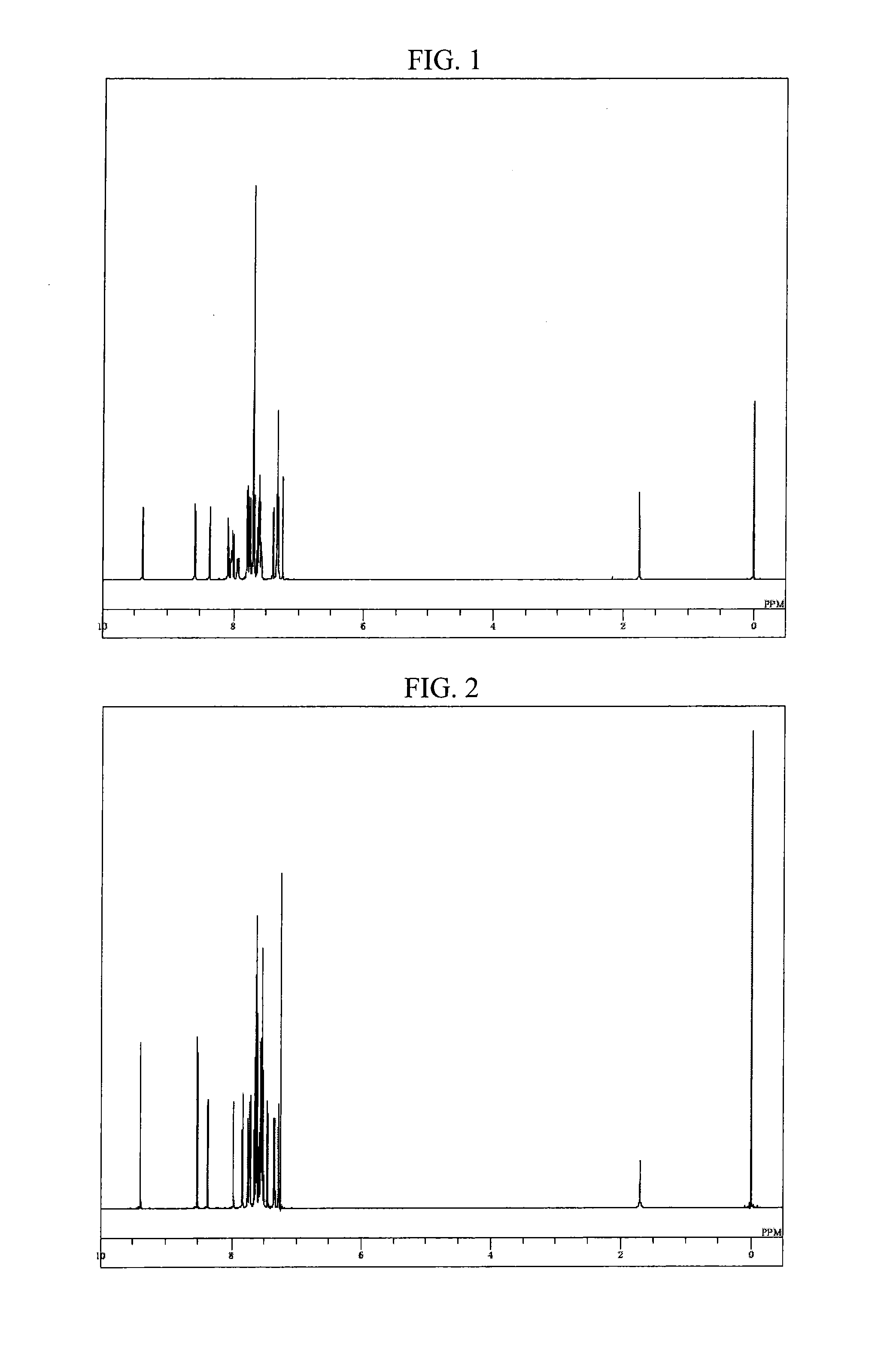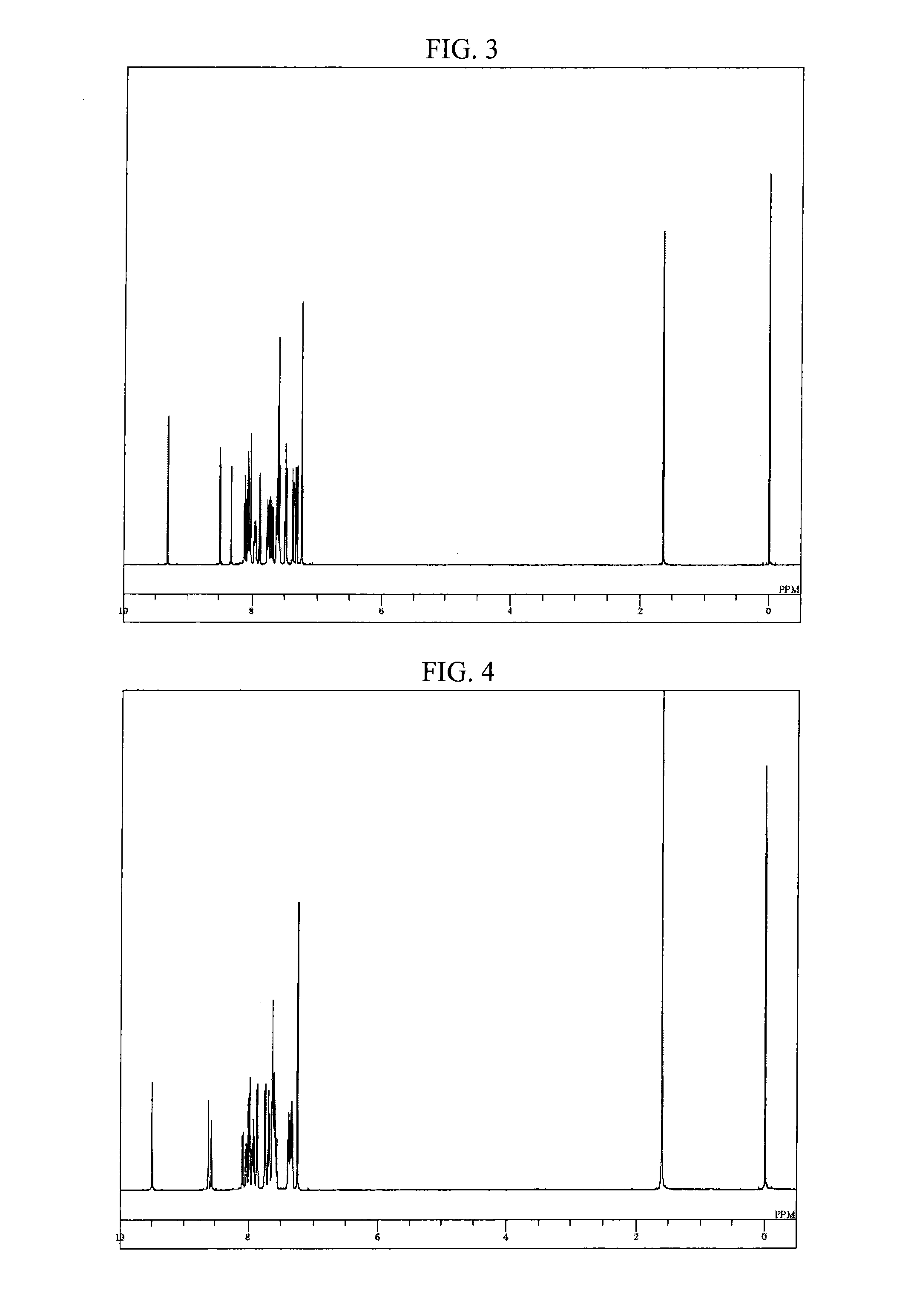Compound having a substituted anthracene ring structure and pyridoindole ring structure, and organic electroluminescent device
a technology of pyridoindole and pyridoidole, which is applied in the direction of anthracene dyes, discharge tubes luminescnet screens, natural mineral layered products, etc., can solve the problems of reduced efficiency, low electron density of materials, and inability to consider that materials have enough hole-blocking capability, etc., to achieve excellent hole-blocking ability, excellent thermal resistance, and high luminous efficiency and power efficiency.
- Summary
- Abstract
- Description
- Claims
- Application Information
AI Technical Summary
Benefits of technology
Problems solved by technology
Method used
Image
Examples
example 1
Synthesis of 8-[10-(naphthalen-2-yl)-anthracen-9-yl]-5-phenyl-5H-pyrido[4,3-b]indole (compound 10)
[0094]Into a nitrogen-purged reaction vessel, 43.0 ml of iodobenzene, 50.0 g of 5H-pyrido[4,3-b]indole, 1.9 g of copper powder, 82.2 g of potassium carbonate, and 2.1 ml of dimethyl sulfoxide were added, then, heated and stirred at 170° C. for 3 hours. After cooling to 100° C., 500 ml of toluene was added thereto followed by stirring at 100° C. for 1 hour. After removing the insoluble matter by filtration, the filtrate was concentrated under a reduced pressure to thereby obtain a crude product. The crude product was purifying by using a column chromatography (carrier: NH silica gel, eluent: toluene), to thereby obtain 69.9 g (yield 96%) of 5-phenyl-5H-pyrido[4,3-b]indole as a yellow liquid.
[0095]Into a nitrogen-purged reaction vessel, 27.2 g portion of the thus obtained 5-phenyl-5H-pyrido[4,3-b]indole and 150 ml of dimethyl formamide were added, then, heated while adding 23.8 g of N-bro...
example 2
Synthesis of 8-(9,10-diphenylanthracen-2-yl)-5-phenyl-5H-pyrido[4,3-b]indole (compound 75)
[0099]Into a nitrogen-purged reaction vessel, 2.8 g portion of the aforementioned 8-bromo-5-phenyl-5H-pyrido[4,3-b]indole obtained in Example 1, 3.6 g of 9,10-diphenylanthracene-2-boronic acid, 0.1 g of tetrakis(triphenylphosphine) palladium, 22 ml of 2 M potassium carbonate aqueous solution, 60 ml of toluene, and 15 ml of ethanol were added and heated, and refluxed for 16 hours while stirring. After cooling to room temperature, 100 ml of toluene and 100 ml of saturated brine were added thereto, followed by stirring, and thereafter, the organic layer was separated. The organic layer was dehydrated using anhydrous magnesium sulfate and then concentrated under a reduced pressure, to thereby obtain a crude product. The crude product was purified by using a column chromatography (carrier: NH silica gel, eluent: toluene / hexane), to thereby obtain 3.0 g (yield 61%) of 8-(9,10-diphenylanthracen-2-yl)-...
example 3
Synthesis of 8-[9,10-di(naphthalen-2-yl)-anthracen-2-yl]-5-phenyl-5H-pyrido[4,3-b]indole (compound 78)
[0102]Into a nitrogen-purged reaction vessel, 2.0 g portion of the aforementioned 8-bromo-5-phenyl-5H-pyrido[4,3-b]indole obtained in Example 1, 3.5 g of 9,10-di(naphthalen-2-yl)anthracene-2-boronic acid, 0.4 g of tetrakis(triphenylphosphine) palladium, 10 ml of 2 M potassium carbonate aqueous solution, 20 ml of toluene, and 5 ml of ethanol were added and heated, and refluxed for 5.5 hours while stirring. After cooling to room temperature, 50 ml of toluene and 30 ml of water were added thereto, followed by stirring, and thereafter, the organic layer was separated. The organic layer was dehydrated using anhydrous magnesium sulfate and then concentrated under a reduced pressure, to thereby obtain a crude product. The crude product was purified by using a column chromatography (carrier: NH silica gel, eluent: toluene), to thereby obtain 2.2 g (yield 53%) of 8-[9,10-di(naphthalen-2-yl)-...
PUM
| Property | Measurement | Unit |
|---|---|---|
| voltage | aaaaa | aaaaa |
| luminance | aaaaa | aaaaa |
| work function | aaaaa | aaaaa |
Abstract
Description
Claims
Application Information
 Login to View More
Login to View More - R&D
- Intellectual Property
- Life Sciences
- Materials
- Tech Scout
- Unparalleled Data Quality
- Higher Quality Content
- 60% Fewer Hallucinations
Browse by: Latest US Patents, China's latest patents, Technical Efficacy Thesaurus, Application Domain, Technology Topic, Popular Technical Reports.
© 2025 PatSnap. All rights reserved.Legal|Privacy policy|Modern Slavery Act Transparency Statement|Sitemap|About US| Contact US: help@patsnap.com



